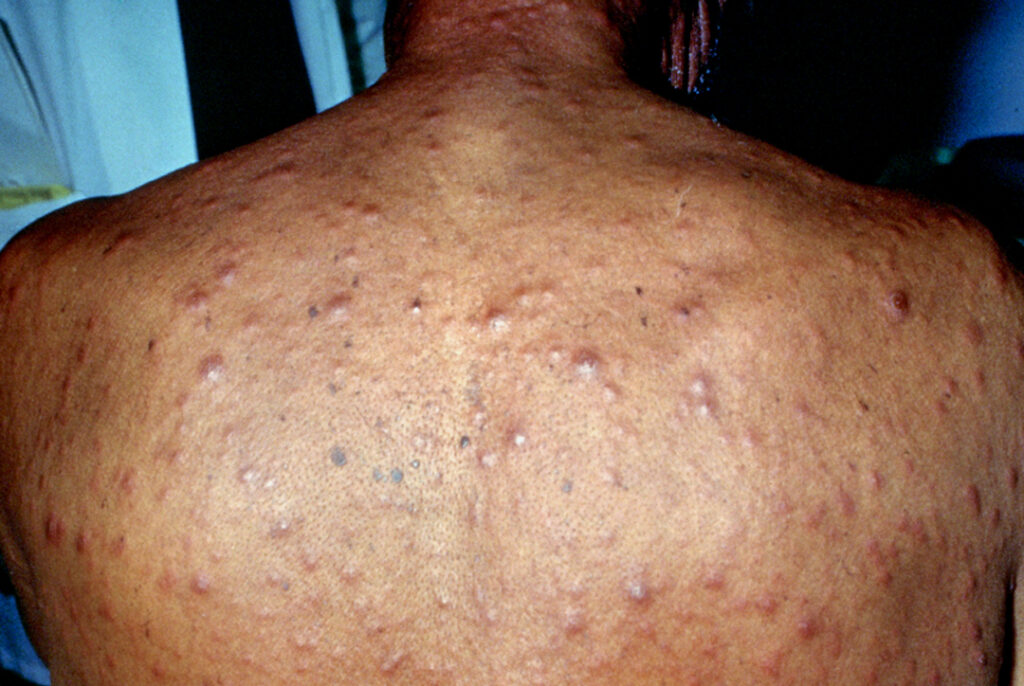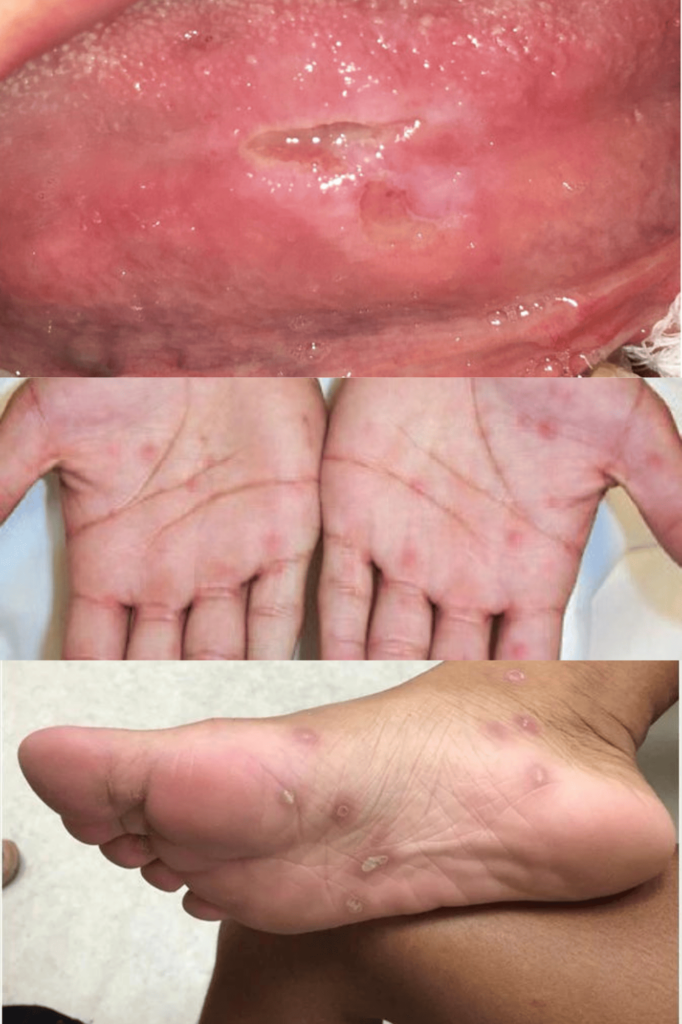Table of Contents
Overview
Syphilis, also known as lues, is a contagious, sexually-transmitted disease caused by the spirochete lleponetna pallidumsubspecies pallidum.The spirochete enters through the skinor mucous membranes, on which the primary manifestations are seen. In congenital syphilis the treponeme crosses th placenta and infects the fetus. it results in multiple patterns of skin and visceral disease and is potentially life long.

Defination :
Syphilis is a bacterial infection caused by the spirochete bacterium Treponema pallidum.his pathogen is typically transmitted through sexual contact, including vaginal, anal, and oral sex. Understanding the modes of transmission is crucial for implementing preventive measures and maintaining sexual health.
What Are Stages of Syphilis ?
It can be four Stages.The infection causes different symptoms in each stage. People are veritably contagious in the first and alternate stages and can fluently pass the infection to their coitus mates. The stages of syphilis are primary, secondary, idle and late( tertiary) syphilis.

Primary Syphilis :
The initial stage of syphilis often presents as a painless sore or ulcer known as a chancre. This sore appears at the site of infection, usually genitals, anus, or mouth, and is a key indicator of syphilis exposure.
Secondary Syphilis :
If left untreated, It progresses to the secondary stage, characterized by skin rashes, mucous membrane lesions, and flu-like symptoms. Recognizing these signs is pivotal for timely diagnosis and intervention.
Latent and Tertiary Syphilis :
It can enter a latent phase where symptoms may not be evident but the infection persists. If untreated, it can progress to tertiary syphilis, affecting vital organs such as the heart, brain, and nerves.
Route of Transmission:
It is primarily transmitted through direct contact with a syphilitic sore. This can occur during vaginal, anal, or oral sex. Moreover, an infected mother can pass the infection to her unborn child during pregnancy.
Signs and Symptoms :
Recognizing the signs and symptoms of syphilis primary is crucial for early intervention. Common indicators include
• Painless sores : Small, firm, and round sores at the infection site.
• Enlarged lymph nodes : Swelling may occur in the lymph nodes near the sore.
• Flu-like symptoms : Fever, fatigue, and headache may accompany the initial sore.
Diagnosis and Testing:
Diagnosing is a nuanced process that demands precision and a thorough understanding of the infection’s dynamics.we recognize the critical importance of accurate diagnosis in the effective management of syphilis.
Clinical Evaluation :
The initial step in diagnosing often involves a clinical evaluation conducted by your healthcare professional. This evaluation includes a comprehensive medical history review and a physical examination to identify any visible symptoms or signs associated with syphilis, such as chancres or skin rashes.
Serological Tests :
Serological tests play a pivotal role in confirming the presence of syphilis by detecting the antibodies produced by the body in response to the infection. These tests are categorized into different types, each serving a specific purpose in the diagnostic process.
1. VDRL (Venereal Disease Research Laboratory) Test:
The VDRL test is a non-specific test that detects antibodies that may indicate a syphilis infection. However, false positives can occur, necessitating further confirmation through additional tests.
2. RPR (Rapid Plasma Reagin) Test:
Similar to the VDRL test, the RPR test is a rapid and sensitive screening tool for syphilis. Positive results trigger the need for more specific confirmatory tests.
3. FTA-ABS (Fluorescent Treponemal Antibody Absorption) Test:
The FTA-ABS test is a confirmatory test that detects specific antibodies against the Treponema pallidum bacterium. It is highly specific and is often employed to validate positive results from non-specific tests.
Nucleic Acid Amplification Tests (NAATs) :
Nucleic Acid Amplification Tests (NAATs) directly detect the genetic material of the Treponema pallidum bacterium. While not commonly used for routine screening, NAATs are highly specific and can be valuable in certain situations, such as when diagnosing in newborns
Darkfield Microscopy
In cases where a fresh chancre is present, darkfield microscopy may be utilized. This technique involves examining a sample from the sore under a special microscope that enhances the visibility of the Treponema pallidum bacterium. Darkfield microscopy is particularly useful in the early stages.
Prevention and Treatment
Prevention Strategies
1. Safe Sex Practices:
Engaging in safe sex practices is paramount in preventing the transmission and other sexually transmitted infections. Consistent and correct use of condoms during vaginal, anal, and oral sex acts as a barrier, significantly reducing the risk of exposure.
2. Regular Testing:
Routine testing for syphilis is a proactive measure, especially for individuals engaged in high-risk behaviors or those with multiple sexual partners. Regular screenings enable early detection and intervention, preventing the progression of the infection and reducing the likelihood of transmission.
3. Partner Notification:
In the event of diagnose, notifying sexual partners is a crucial step in preventing further transmission. Open communication and mutual support contribute to a collective effort in managing and mitigating the impact of the infection.
1. Antibiotics:
Antibiotics, with penicillin as the primary choice, form the backbone of its treatment. The specific antibiotic and treatment duration depend on the stage of the infection. Completing the prescribed course is imperative to ensure the complete eradication of the Treponema pallidum bacterium.
2. Early Intervention:
Early detection and prompt treatment are critical in preventing the progression of syphilis to more advanced stages. Regular testing, especially for individuals with known risk factors, facilitates early intervention, minimizing the impact on the individual’s health and reducing the risk of complications
Conclusion
In conclusion, the diagnosis and testing involve a multifaceted approach, encompassing clinical evaluation, serological tests, nucleic acid amplification tests, and, in specific cases, darkfield microscopy. Timely testing, coupled with confidentiality and support, empowers individuals to take control of their sexual health and facilitates the early intervention necessary for effective management of syphilis.
FAQs
1.How often should one get tested for STDs?
Regular testing is recommended, especially if sexually active or engaging in high-risk behaviorRegular testing is recommended, especially if sexually active or engaging in high-risk behavior.
2.Can STDs be completely cured?
Many STDs, including Syphilis, can be effectively treated with proper medical intervention.
3.Are all STDs preventable?
While not all are preventable, adopting safe sex practices significantly reduces the risk of STD transmission
4.How does societal stigma affect those with STDs?
Societal stigma can contribute to feelings of shame and isolation, impacting mental well-being.
5.What role does education play in preventing STDs?
Education plays a crucial role in raising awareness, dispelling myths, and promoting responsible sexual behavior.
6.Can syphilis be transmitted through kissing?
While syphilis is primarily transmitted through sexual contact, including kissing, it is a less common mode of transmission. The risk increases when there are open sores or lesions in the mouth.
7.What are the complications of untreated syphilis?
Untreated syphilis can lead to severe complications, including damage to the heart, brain, nerves, and other organs. It can also result in congenital syphilis if transmitted from an infected mother to her baby during pregnancy
